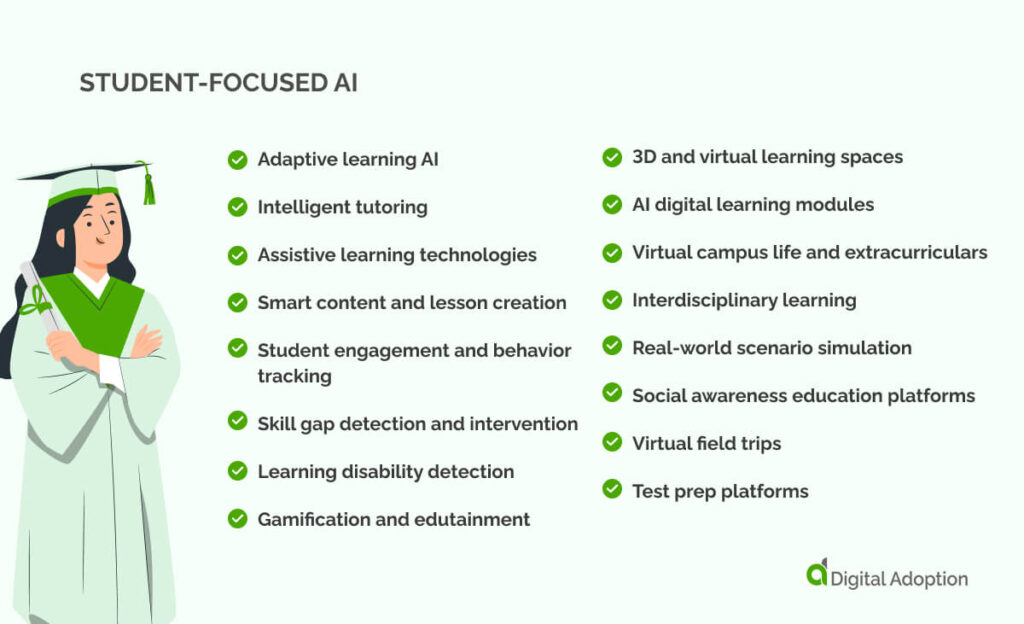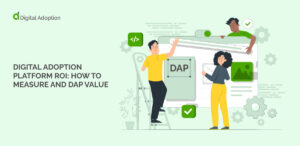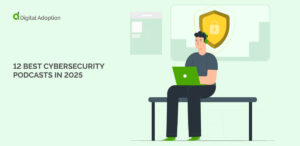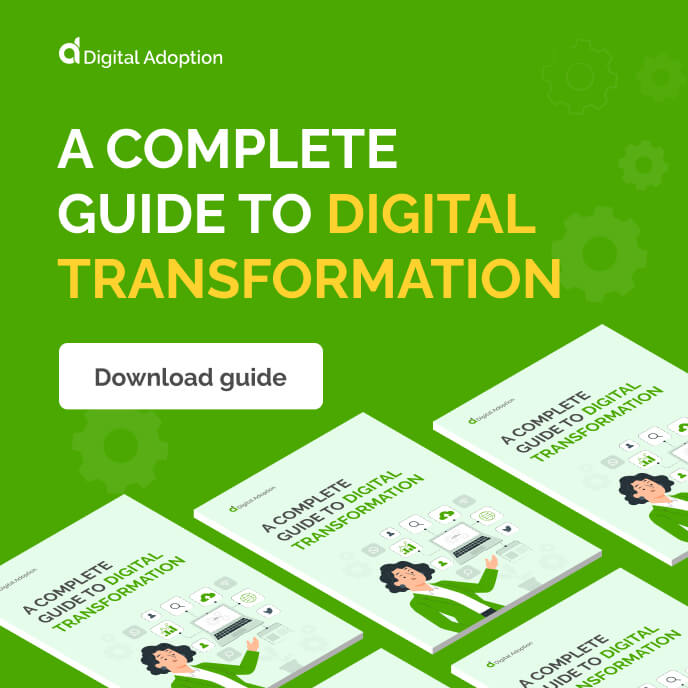Almost every global sector has entered the AI adoption race, with the upper limits of artificial intelligence’s (AI) potential still unknown.
Intelligence systems siphon huge data sets to learn, understand, and perform complex actions independently. Key decisions, pattern detection, and data analysis, which once required a human touch, can now be augmented with the help of AI.
AI in education is no exception, as the technology finds numerous applications for enhancing learning and teaching experiences.
This article will explore twenty-nine examples of AI in education, dividing each entry into three categories: Student-Focused AI, Teacher-Focused AI, and Institution-Focused AI.
AI in education examples at a glance:
| AI Technology | Function | Category |
| Adaptive learning AI | Adjusts lessons in real-time based on a student’s performance. | Student-focused AI |
| Intelligent tutoring | Gives step-by-step help like a private tutor. | Student-focused AI |
| Assistive learning technologies | Helps students with disabilities learn using tools like speech-to-text. | Student-focused AI |
| Smart content and lesson creation | Builds quizzes, summaries, or lessons from textbooks or topics. | Student-focused AI |
| Student engagement and behavior tracking | Monitors attention, activity, or drop-off using video or platform data. | Student-focused AI |
| Skill gap detection and intervention | Identifies what a student doesn’t understand and suggests extra practice. | Student-focused AI |
| Learning disability detection | Flag patterns that suggest dyslexia or other learning issues. | Student-focused AI |
| Gamification and edutainment | Adds game-like features or stories to keep students interested. | Student-focused AI |
| 3D and virtual learning spaces | Creates online worlds where students can explore subjects interactively. | Student-focused AI |
| AI digital learning modules | Offers small lessons that adjust based on the student’s pace. | Student-focused AI |
| Virtual campus life and extracurriculars | Simulates clubs, events, or activities through online avatars or portals. | Student-focused AI |
| Interdisciplinary learning | Links topics such as science and art into a connected lesson. | Student-focused AI |
| Real-world scenario simulation | Let’s students practice real-life situations in a controlled virtual space. | Student-focused AI |
| Social awareness education platforms | Uses stories or cases to teach ethics, empathy, or cultural topics. | Student-focused AI |
| Virtual field trips | Let’s students explore museums or landmarks through live or 3D video. | Student-focused AI |
| Test prep platforms | Customizes practice tests and gives instant feedback on answers. | Student-focused AI |
| Automated grading and assessment | Score essays or quizzes and explain mistakes. | Teacher-focused AI |
| Conversational AI (chatbots & virtual assistants) | Answers staff or student questions 24/7 about classes or school tasks. | Teacher-focused AI |
| Parent-teacher communication | Sends alerts or updates to parents based on student progress. | Teacher-focused AI |
| Learning analytics and data insights | Shows teachers’ patterns in student performance or activity. | Teacher-focused AI |
| Plagiarism detection | Flags copied text in essays or homework using pattern checks. | Teacher-focused AI |
| Academic research | Helps sort papers, find topics, or summarize long texts. | Teacher-focused AI |
| Curriculum intelligence and optimization | Recommends what to teach or skip based on student needs and performance. | Institution-focused AI |
| LMS augmentation | Adds smart features to platforms, such as auto-feedback or content tagging. | Institution-focused AI |
| Proctoring solutions | Watches test-takers for signs of cheating using webcams or keystroke data. | Institution-focused AI |
| AI-led administrative actions | Handles repetitive administrative tasks, such as scheduling or form processing. | Institution-focused AI |
| Campus security and surveillance | Utilizes cameras or sensors to identify unusual activity or potential safety issues. | Institution-focused AI |
| School transport optimization | Plans the most efficient bus routes based on pickup data and traffic. | Institution-focused AI |
Student-focused AI

Let’s begin with AI designed to enhance and support student capabilities.
This category showcases AI tools and platforms that facilitate innovative learning methods, adapt to students’ needs in real-time, and reimagine how they engage with learning materials.
Adaptive learning AI
As the name suggests, adaptive AI learning platforms hone in on methods that individualize student learning. In schools where resources are spread thin, AI can step in to augment teaching. Machine learning models (ML) analyze past tests, attendance records, and teacher notes (verified for bias) to identify student needs. This way, each student gets a path tailored to their pace.
Intelligent tutoring
Also designed to support adaptive learning, AI-led intelligent tutoring systems supplement both student and teacher capabilities. They refine how lessons are delivered using stored data on student pace, comprehension, and pain points. Difficult concepts are broken down into stages, while natural language processing (NLP) assistants deliver feedback in accessible ways, mirroring the role of real teachers without undercutting their authority.
Assistive learning technologies
AI-assistive learning tools support special education needs, including students with Dyslexia, Autism, ADHD, and Down syndrome. Teaching demands bespoke lesson plans, alternative learning habits, and ethical care. AI can build IEPs and adjust delivery, pace, and tools. AI can also transcribe speech with impairments and use person-first language without bias in interactions, provided it is properly trained.
Smart content and lesson creation
Responsibility for lesson planning, research, and sourcing no longer sits solely with teachers. AI can read, understand, and repurpose global data sets into new strategies. Smart content adjusts to where students are in the subject, their reading levels, and other contextual factors, easing the prep load for teachers without compromising on quality.
Student engagement and behavior tracking
When educators monitor engagement and behaviour, time is lost delivering quality work. AI can track shifting student metrics and KPIs in real-time. Instead of teachers running manual checks on each student, AI logs behavioral patterns, flags absences, links detention rates, and helps uncover the causes behind class dismissals for proactive teacher responses.
Skill gap detection and intervention
Identifying hidden skills gaps in classrooms with 30 or more students is challenging, let alone crafting individualized solutions for each student. AI processes data, such as test averages and learning roadblocks, to quickly design targeted plans that close gaps. It can also map student trajectories and introduce development strategies early, identifying future skills before they’re needed.
Learning disability detection
AI can detect patterns in data that an untrained human may miss, including students with undiagnosed learning disabilities. It can assess past performance, test results, and handwritten notes. Balancing different data points, AI can estimate the likelihood of a disability and notify staff. Adaptive learning plans then realign expectations to student capability.
Gamification and edutainment
Teachers no longer need to rely on traditional, text-heavy learning methods. AI reimagines gamification by bringing fun, interactive game mechanics into lesson creation. Classes can be customized to fit each student, reflect school standards, and evolve in real-time, with questions, answers, and difficulty shifting based on learning styles and student interaction each time.
3D and virtual learning spaces
AI can turn education into a 3D experience using extended reality (XR). With virtual reality (VR) headsets, students can explore new topics in lifelike spaces. These tools are still growing, but they’re already helping students learn in new ways. AI assistants support teachers by providing interactive lessons and videos, making it easier for students to stay focused and grasp key concepts.
AI digital learning modules
AI learning modules are small, focused lessons that adapt to each student’s learning style. Like adaptive learning, they follow your pace, find what’s hard for you, and avoid repeating what you already know. AI uses pictures, charts, and clear language to explain ideas in a way that matches your learning style.
Virtual campus life and extracurriculars
AI recreates virtual campus life and extracurriculars, allowing students to join clubs, societies, and events online. It tracks attendance, preferences, and engagement to tailor suggestions, helping students stay connected and active beyond the classroom in ways that reflect their interests and habits.
Interdisciplinary learning
AI helps students connect different subjects, such as science, literature, and math. It illustrates how ideas connect, guiding the students to see the potential value. AI also keeps track of progress and challenges, building lessons around each student’s needs. Hard topics are broken down into smaller steps to make learning easier and more manageable.
Real-world scenario simulation
Some lessons are easier to understand when learned through doing, rather than just reading. With virtual and augmented reality, students can immerse themselves in real-life situations without leaving the classroom. AI makes these experiences feel real and adjusts them to each student’s choices. This helps improve problem-solving and decision-making in a safe and hands-on manner.
Social awareness education platforms
Social awareness education platforms use AI to help all students learn about emotions, respect, and teamwork. They give personalized lessons and feedback that build empathy and communication skills. These tools create kinder, more connected classrooms where everyone feels valued and included.
Virtual field trips
AI-powered virtual field trips bring distant places to students in real-time and with incredible detail. They create hands-on learning experiences that inspire exploration and connect learners with environments they might never have visited otherwise.
Test prep platforms
AI adapts study plans by analyzing your learning patterns and focusing on areas needing improvement. It delivers practice questions and clear feedback, making exam preparation more efficient and effective. These personalized methods help students gain confidence and higher scores through focused, smart studying.
Teacher-focused AI

This category features tools that support teachers in managing classrooms and improving instruction.
These systems help save time, provide insights on student progress, and offer new ways to connect with learners. The ultimate goal is to make teaching more efficient and impactful, and to provide educators with the tools to support student growth.
Automated grading and assessment
Grading tests and homework can be monotonous and time-consuming. Automated systems handle this quickly and fairly, giving instant and continuous feedback to students. This frees teachers to spend more time helping students understand challenging topics and develop their lifelong skills.
Conversational AI (chatbots & virtual assistants)
AI assistants and AI chatbot platforms interact with students and answer questions at any time, day or night. They help explain lessons and remind students about tasks. This support makes learning smoother, allowing teachers to focus more on teaching rather than constantly answering repetitive questions.
Parent-teacher communication
AI productivity tools send parents quick updates about their child’s schoolwork and progress. They make it simple for parents and teachers to stay connected and share information. When informed, families can better support their child’s learning journey.
Learning analytics and data insights
Data from students’ learning habits shows where they struggle or excel. Teachers analyze this information from learning analytics platforms to adjust lessons and give extra help when needed. Educators can utilize these insights to develop more effective learning plans tailored to each student’s strengths and weaknesses.
Plagiarism detection
Checking for copied work is important in education and is a pillar of good practice. AI tools scan assignments to spot plagiarism, helping students understand the value of original thinking. This encourages honest work and helps maintain fairness across all students in the classroom and at home.
Academic research
Teachers rely on heavy research to improve their lessons, lectures, and study materials. AI can quickly gather and summarize recent studies, saving time and effort. Staying informed about new teaching methods and discoveries enables educators to introduce fresh ideas into the classroom, leading to improved student outcomes.
Institution-focused AI
This category focuses on tools that enhance how schools and universities manage daily tasks, ensure safety, and utilize resources effectively.
These systems support institutions in creating a better environment for staff and students while keeping up with evolving education demands.
Curriculum intelligence and optimization
Schools now use curriculum intelligence technology to study how students learn and improve lesson plans and study. This helps teachers adjust content to match students’ needs, making lessons more understandable and relevant. Smarter curricula lead to better student engagement and higher success rates across subjects.
LMS augmentation
Learning management systems (LMS) become smarter by tracking how each student progresses. They suggest resources and organize lessons to fit different learning speeds. Teachers save time while students receive personalized support, making studying easier and more effective for everyone involved.
Proctoring solutions
Remote exams are monitored using advanced tools that watch for suspicious behavior. These systems protect test fairness by identifying cheating without requiring physical oversight. Students can take tests from anywhere, confident that the process is secure and trustworthy.
AI-led administrative actions
Many routine tasks, like scheduling and attendance, are handled automatically by smart office technology. This reduces mistakes and lets staff focus on important work supporting students. Schools benefit from smoother daily operations and less paperwork.
Campus security and surveillance
AI security systems continuously monitor school areas, quickly identifying unusual events. Alerts are sent instantly to staff, allowing them to respond more quickly to potential threats. This technology helps keep everyone safer on campus during school hours and alleviates the pressures of having on-site security.
School transport optimization
Bus routes are planned by analyzing traffic patterns and student locations to ensure efficiency. The goal is to find the fastest and safest paths so that students arrive on time. Optimized transport is a new initiative that saves money, reduces delays, and improves daily school commutes.
AI as a catalyst for transforming education
The education sector has long been a leader in academic research, built on a foundation of scientific discovery and digital innovation.
AI must be integrated thoughtfully and fairly across all areas of education for it to flourish. This integration should prioritize equality, worth, and continuous evaluation through digital dexterity frameworks for education that monitor progress.
When institutions invest time, resources, and academic expertise into AI, the potential to transform learning, teaching, and administration becomes limitless.
Embracing AI responsibly will open doors to innovative teaching methods, personalized experiences, and more efficient academic systems, driving education forward in ways previously unimaginable.
The future of education depends on merging traditional academic study with the prowess of AI technology, ensuring it supports and enhances every aspect of the sector.
People Also Ask
-
How do AI tutors compare to human-led instruction?AI tutors offer instant assistance and can tailor learning to meet each students individual needs. They’re great for practice and support, but lack the human connection, empathy, and real-world experience that teachers offer. The best results are achieved when AI supports and complements human instruction.
-
How do schools protect student data used by AI systems?Schools use strict rules and secure systems to protect student data. They limit what data AI can access and adhere to privacy laws, such as the General Data Protection Regulation (GDPR). Trusted AI tools are thoroughly tested to ensure that student information remains safe and private at all times.
-
Can AI be biased in grading or teaching?Yes, AI can be biased if trained on unfair or limited data. AI bias can lead to wrong grades or inequitable treatment. That’s why schools must regularly check AI systems and incorporate human oversight to ensure learning remains fair for everyone.

 FACT CHECKED
FACT CHECKED![29 Examples of AI in Education [2025]](https://www.digital-adoption.com/wp-content/uploads/2025/06/29-Examples-of-AI-in-Education-2025.jpg)







